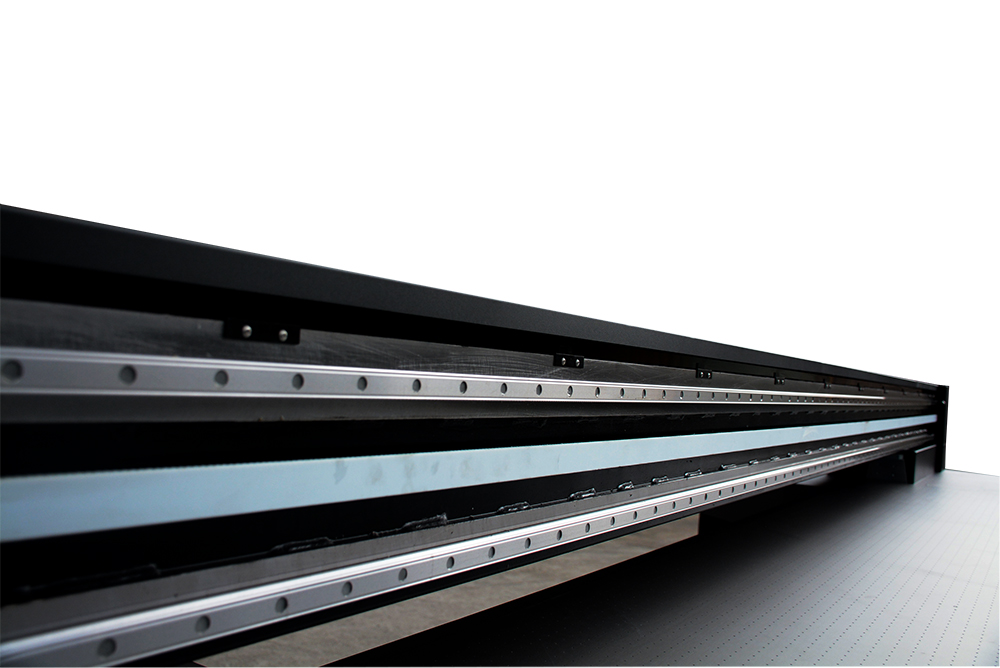Unraveling the Technical Secrets Behind UV Flatbed Printer Printing Speed
Welcome to an insightful exploration into the world of UV flatbed printers, a cornerstone of modern digital printing technology. If you’ve ever marveled at how quickly a UV printer can transform a blank surface into a vibrant masterpiece, you’re not alone. Understanding the technical aspects that drive UV flatbed printer speed can unlock new possibilities for your business or creative projects. In this blog, we’ll delve into the inner workings of these printers, focusing on what makes them tick at high speeds while maintaining quality.

Understanding UV Flatbed Printing Basics
Before diving into speed, it’s essential to grasp the fundamental principles of UV flatbed printing. Unlike traditional printers that use liquid inks that soak into the material, UV printers employ ultraviolet light to instantly cure (harden) ink as it’s deposited onto the substrate. This process not only accelerates drying times but also allows printing on a wide range of materials, from glass and metal to plastics and fabrics. The versatility and efficiency of UV printing have made it a favorite among professionals seeking high-quality, durable prints.
The Role of Printhead Technology
At the heart of every UV flatbed printer lies its printhead technology. These tiny, sophisticated components are responsible for ejecting ink droplets onto the substrate with precision and speed. Modern UV printers often feature multiple printheads, each capable of handling different colors or inks, including white and varnish for special effects. The speed at which these printheads can fire ink is a critical factor in overall printing speed. Advanced printheads, such as those using piezoelectric technology, offer faster response times and higher resolution, enabling faster print speeds without sacrificing image quality.
Ink Flow and Pressure Control
Ink flow and pressure control systems play a pivotal role in maintaining consistent print speeds. Efficient ink circulation ensures that the printheads receive a steady supply of ink, preventing clogs and interruptions. Precise pressure control mechanisms adjust the force with which ink is expelled from the printheads, optimizing speed and accuracy. When these systems are well-tuned, they allow the printer to operate at its peak performance, delivering rapid, high-quality prints.
Material Handling and Bed Movement
The speed of a UV flatbed printer isn’t just about ink; it’s also about how quickly and smoothly the substrate moves beneath the printheads. Modern UV printers utilize advanced material handling systems, including vacuum tables or grippers, to securely hold materials in place during printing. Simultaneously, the print bed moves with precision, often driven by servo motors, ensuring accurate registration and consistent print speeds across large areas. Efficient material handling and bed movement are crucial for maximizing productivity, especially when printing large-format jobs.
Data Processing and RIP Software
The journey from digital file to physical print involves complex data processing. Raster Image Processor (RIP) software translates your design files into a language the printer can understand, optimizing color management, resolution, and other parameters for the best possible output. High-speed RIP software can significantly reduce processing times, allowing the printer to start printing faster. Moreover, features like multi-threading and parallel processing enable the RIP to handle large files or multiple jobs simultaneously, further enhancing overall throughput.
Environmental Considerations and Curing Speed
While not directly related to the mechanical speed of the printer, the curing process is an integral part of UV printing that affects overall job completion time. UV lamps positioned above the print bed emit ultraviolet light that instantly cures the ink, but the intensity and duration of this exposure can vary. Faster curing speeds can be achieved with more powerful UV lamps or by optimizing the distance between the lamp and the substrate. However, it’s crucial to balance speed with the need for thorough curing to ensure the longevity and durability of the prints.
Maintenance and Upkeep: Keeping Speed at Its Peak
To maintain optimal printing speed, regular maintenance is essential. This includes cleaning the printheads to prevent clogs, checking ink levels and replacing cartridges promptly, and ensuring the vacuum table or grippers are functioning correctly. Additionally, periodic calibration of the print bed and printheads helps maintain accurate registration and speed. By investing in routine maintenance, you can extend the lifespan of your UV printer and keep it operating at its peak performance.
Conclusion
In conclusion, the technical aspects of UV flatbed printer printing speed are a complex interplay of printhead technology, ink flow and pressure control, material handling, data processing, curing speed, and regular maintenance. By understanding these elements and how they contribute to overall performance, you can make informed decisions when selecting a UV printer for your needs. Whether you’re a business owner looking to increase productivity or a creative professional seeking high-quality prints, the right UV printer, combined with a solid understanding of its technical underpinnings, can open up a world of possibilities. So, the next time you marvel at the speed and quality of a UV flatbed printer, remember the intricate dance of technology that makes it all possible. Happy printing!
